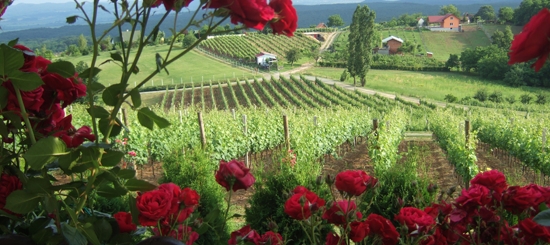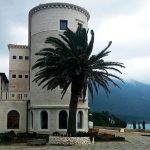
Pleternica, a small town near a well-known winemaking centre of Kutjevo, is one of those places in Slavonia where traditionally wines have been made for a long time, thanks to the two hills near the town, Klikun and Starac. Those two positions offer one of the best micro-locations for vines in continental Croatia, and the wine made there was well known for its quality, and has been sold to the Vienna court in the early 20th century. For many reasons, those two hills ended up neglected, vines were allowed to be overgrown and no wine has been made from those vineyards for decades. One family specifically decided that it was time to change that, that they needed to do what it took to make those two hills known for their vineyards again, after over 40 years of neglect. It was the Markota family.
They have been working on the project of revitalisation of viticulture on those two hills for over a decade now, and several generations of the family are involved in the family winery. So, these days on those two positions they managed to reclaim for vineyards, they have over 33 hectares of graševina, chardonnay, pinot gris, sauvignon blanc, rhein riesling, muškat otonel, cabernet sauvignon, pinot noir, merlot and cabernet franc – the usual suspects, one might say, when it comes to vineyards in continental Croatia. Their investment in the cellar technologies was largely supported by EU funding, and these days with over 150,000 bottles produced annually they are among the bigger family wineries in Croatia.
Their graševina, called “Starac” is the pride of the cellar, as is usually the case with the wineries from that region. A premium wine, full of wonderful varietal aromas, fresh and fruity and at the same time complex and rounded, and has been collecting awards both nationally and internationally. Cabernet sauvignon is also planted on the Starac hill, and the wine is powerful, strong in alcohol and tannins, very fruity and allowed to age well in the oak barrel.
The Markota family vineyards are additionally interesting because of one feature not seen often in Croatian vineyards: each row of their vines begins with a rose plant, just like it’s customary in Tuscany. It is believed that the roses are able to predict diseases of the vines, and even if not, they certainly make the vineyard even more gorgeous in full bloom – and the roses and graševina bloom almost at the same time in late May or early June, which is a sight to be seen. Markota family will welcome you for a tasting in their tasting cellar, which is in fact a repurposed old 50,000 barrel!










